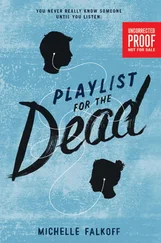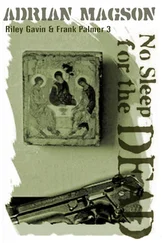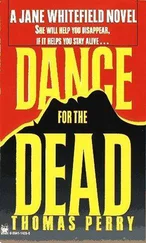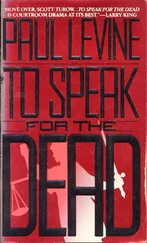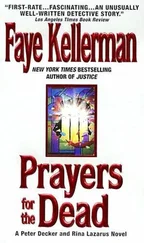She set down her phone. She had a brother, Morris, with the Florida Highway Patrol out of Jacksonville. Maybe he could see whom the plate belonged to. She picked up the phone and dialed his number.
“Hello, Sis,” came the deep voice.
Fauchet exhaled with relief. She explained what she wanted and why. There was a long silence, and then Morris said: “Sis? Let those FBI guys deal with it.”
“Listen, Morris—”
“I know you were really into Harriet the Spy as a kid. But you’re an M.E., not a detective.”
She felt crestfallen. “I can’t get hold of the ‘FBI guys.’”
“Call Miami Homicide, then.”
She didn’t want them to have the collar; Pendergast was the one who’d put the critical pieces together. “Can’t you just give me a name? There’s a serial killer out there, and he might kill again at any moment.”
“All the more reason you should leave this to the professionals.” A long sigh. “I love you, Sis, but sorry. They flag those kinds of checks these days — you wouldn’t want me to get fired, right?”
She didn’t answer, waiting him out.
“You know,” he said finally, almost reluctantly, “under the Florida open government act, everyone now has access to a section of the MVD database. You can’t run a plate, but you can check on citations, accidents, DUI, fraud, criminal stuff.”
Fauchet thanked him and said goodbye. Then she put down the phone and ruminated.
The killings ceased after Ithaca. Pendergast had speculated that the murders might have stopped because the killer, or killers, died. And Coldmoon had taken the speculation further, wondering if maybe the apprentice had killed the master. That was possible, of course. It was also just as possible something else happened: some sort of accident — like a car accident — ended the killing spree.
Okay. It was a long shot, but worth a try — to see if the license plate from the Bethesda motel had been involved in an accident in the weeks following the Ithaca murder.
She logged into the morgue’s computer system and moused her way through the labyrinth of governmental menus until she reached the MVD. A minute of poking around brought her to a database search page, where she typed in the license plate number and the date parameters of her query.
Bingo.
A 1997 Mercury Tracer wagon, Florida license plate JW24-99X, was involved in a fatal accident on I-81 south of Scranton, Pennsylvania, in March 2007... just one week after the Ithaca killing.
Fauchet quickly searched the internet and brought up a local newspaper article about the accident. It was brief: the vehicle had gone off the highway, hit a guardrail, and rolled. The car’s registered owner, a man named John Bluth Vance, had been killed in the resulting crush of metal. His fourteen-year-old son, Ronald, had been taken to the hospital with serious injuries. The cause of the accident was “under investigation.”
And that was it. There were no subsequent articles about Vance’s death, the accident, or his son’s movements. It was as if Ronald Vance simply vanished — that is, if the accident hadn’t ultimately killed him.
Fauchet felt her heart pounding. This could be it. Admittedly, the evidence was thin — she’d only matched the car to the site of one killing — but the date and place of the accident matched with the sudden cessation of homicides... as outlined by Pendergast.
The killings stopped after Ithaca because of the fatal accident — which ended the brutal road trip. That wasn’t all. They — a father-and-son team — had been traveling under assumed names. They drove a car with Florida plates. And they had stayed at the same motel as Laurie Winters on the night she was killed.
The son, Ronald Vance — alias Travis Lehigh — would now be twenty-four, maybe twenty-five. If she was right, this fourteen-year-old boy had been forced to participate in a series of horrific murders that — as Pendergast hypothesized — culminated in his committing the final murder at Ithaca himself, shortly before his father was killed in a car accident.
On a hunch, she did a meta-search of the medical databases at her disposal. Nothing showed up on a sweep of the Miami area, or for the state of Florida, either. But when she did a nationwide search, she learned that a Ronald Vance, aged twenty-four, had been released from the King of Prussia Subacute Care Center in September of last year. Digging deeper, she found Vance had been transferred to the center from Powder Valley State Hospital outside of Allentown, nine months before.
Powder Valley Hospital, she quickly discovered, specialized in long-term rehabilitation of neurologic trauma. And like King of Prussia, it wasn’t far from Scranton. If Ronald Vance had been admitted to Powder Valley as a minor , the records would be sealed. That’s why she could only see the recent transfer and release dates.
No wonder the guy was so utterly messed up: he’d been dragged on a monstrous road trip by his father, then gravely injured in a car accident. And that accident resulted in some kind of head injury that took him a decade to recover from. Assuming he recovered... what if he’d developed a psychosis that, to those caring for him, appeared to present itself as trauma instead?
It all made sense. Ronald Vance was Brokenhearts. He’d been released from the subacute care center less than seven months ago — half a year before the new murders started up. Now he was trying to atone for those previous murders — by killing more people! There was a motive here, even if it was insane.
She took a deep breath. Admittedly, there was more due diligence to be done. But this felt right.
This felt huge.
Fauchet turned to a people-search app on her phone and typed in “Ronald Vance, Miami.” It took her less than ten seconds to get a hit.
Name:
Ronald C. Vance
Age:
24
Address:
203 Tarpon Court
Golden Glades, FL 33169
Holy shit: there it was. So he had come home!
Golden Glades — where was that again? She pulled up her keyboard and typed in the address, and a map of the endless Miami sprawl appeared on her screen. There : abutting North Miami Beach, only a few miles from Pendergast’s safe house. And not too far from the site where the first heart was left.
A half-hour drive. Maybe less, if the traffic cooperated.
Once again she tried to call Pendergast and Coldmoon, but the calls still went straight to voice mail.
She went over the train of logic again, slowly. Was it actually possible she was right? Could Ronald Vance be Mister Brokenhearts — and could he really be living just a short drive away?
She stared at the screen and the map it displayed, with the little red arrow blinking just above the street named Tarpon Court.
Up close, the airboat was even smaller than it had looked from a distance. The bow swept upward, like a World War II landing craft. There were two seats, one behind the other, both on stilts. The big prop at the rear was attached to a ninety-horsepower Lycoming engine and enclosed in a wire cage. Coldmoon rapped on the gas tank: full.
Pendergast turned to him. “Have you ever driven one of these?”
“No,” said Coldmoon.
“In that case, no time like the present. Care to take the helm?”
“I’d rather not. I, um, don’t like water.”
He felt Pendergast’s amused gaze on him. “I’m not overfond of the substance myself, at least in large, stagnant, miasmic bodies. But if you don’t mind, I’d prefer to function as guide and lookout.”
“Let me guess. If I object again, you’ll remind me whose idea it was to interview John B. Vance.” Coldmoon got into the boat and, muttering to himself in Lakota, stepped up to the wheel, then cast an eye over the helm. Everything looked pretty simple: a key, a choke, and a combined throttle and gearshift with neutral, forward, and reverse. And there was a little stopcock on what was obviously the fuel line. He sat down in the front seat, opened the stopcock, set the throttle to neutral, pulled out the choke, and turned the key. The engine fired up almost immediately.
Читать дальше


